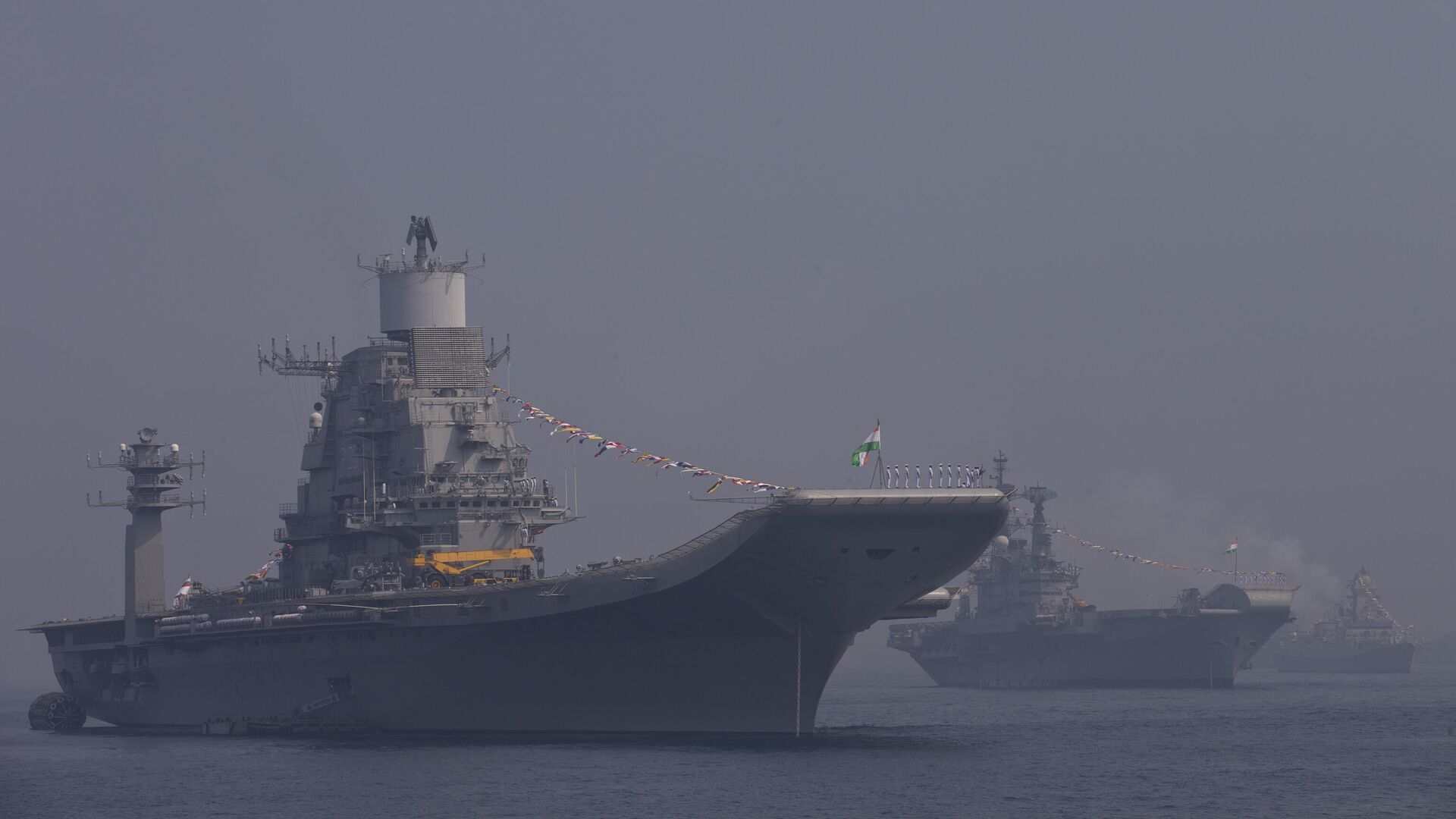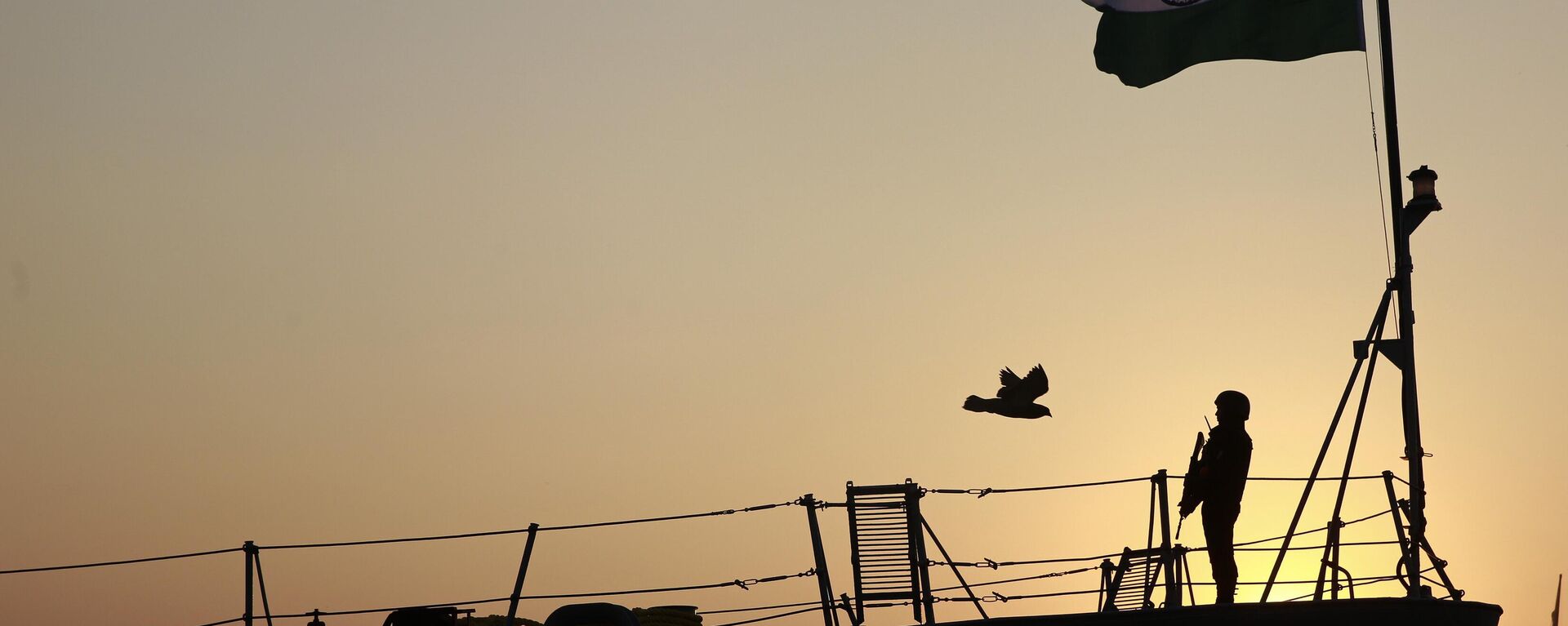https://sputniknews.in/20240430/what-navys-plan-to-achieve-100-percent-self-reliance-in-warship-making-means-for-india-7255955.html
What Navy's Plan to Achieve 100 Percent Self-Reliance in Warship-Making Means For India?
What Navy's Plan to Achieve 100 Percent Self-Reliance in Warship-Making Means For India?
Sputnik India
The Indian Navy is aiming to become the pre-eminent naval force in the Indian Ocean Region (IOR), and a large part of this goal hinges on becoming self-reliant in all spheres of warship construction.
2024-04-30T20:51+0530
2024-04-30T20:51+0530
2024-04-30T20:51+0530
india
ukraine
us
indian navy
brahmos supersonic cruise missile
missiles
military equipment
warship
indian ocean
south asia
https://cdn1.img.sputniknews.in/img/07e8/03/0f/6836792_0:320:3072:2048_1920x0_80_0_0_72e21d1f78aa29ed8555d0931b97d829.jpg
The Indian Navy has already achieved over 70 percent self-reliance in warship construction, including the production of aircraft carriers. The South Asian nation's blue water force is now aiming to take this ceiling to 100 percent with a target to attain the goal by 2040.In February this year, the then-Navy chief Admiral R Hari Kumar highlighted the levels of self-reliance India has accomplished in various facets of shipbuilding.India's Self-Reliance Figures in Production of Naval Vessels"A ship has three components - float, move, and fight. In the float component, we have achieved almost 95 percent (self-reliance). In the 'move' component, we are somewhere at 65 percent and in the 'fight' component, we are at 55 percent," Kumar noted.While India's shipbuilding industry, which is largely dominated by state-run shipyards like Mazagon Dock Limited, Cochin Shipyard Limited, and Hindustan Shipyard Limited amongst others has made rapid strides toward indigenization, a lot is yet to be accomplished.For example, the gas turbine engines that are used in naval vessels are still sourced from Ukraine or the US while some of the most advanced sensors needed to be equipped in warships are acquired from either Israel or Germany.Against this backdrop, Indian Navy veteran Captain (Retd) DK Sharma underlined that he was "100 percent sure" of the world's largest democratic state attaining complete self-reliance in the production of warships by 2040.The former Indian Navy spokesperson explained that the process of shipbuilding is divided into three parts - to move, to float, and to fight.New Delhi Has Some Way to Go Before Its 2040 TargetSo in the 'move' part, power propulsion is the main component - which is the engine that moves the ship and India is not yet self-reliant in this domain.Otherwise, India has achieved success in producing generators, air-conditioning, reverse osmosis plants, and various other things, which have all been sorted for the Indian Navy by the nation's scientists, Sharma emphasized.
https://sputniknews.in/20240412/indian-navys-jewel-in-arabian-sea-a-naval-base-with-exclusive-port-for-operations-7117666.html
india
ukraine
us
indian ocean
south asia
russia
Sputnik India
feedback.hindi@sputniknews.com
+74956456601
MIA „Rossiya Segodnya“
2024
Pawan Atri
https://cdn1.img.sputniknews.in/img/07e6/0c/13/139630_147:0:831:684_100x100_80_0_0_8fa2b25903e7787fe6a2698552c167df.png
Pawan Atri
https://cdn1.img.sputniknews.in/img/07e6/0c/13/139630_147:0:831:684_100x100_80_0_0_8fa2b25903e7787fe6a2698552c167df.png
News
en_IN
Sputnik India
feedback.hindi@sputniknews.com
+74956456601
MIA „Rossiya Segodnya“
Sputnik India
feedback.hindi@sputniknews.com
+74956456601
MIA „Rossiya Segodnya“
Pawan Atri
https://cdn1.img.sputniknews.in/img/07e6/0c/13/139630_147:0:831:684_100x100_80_0_0_8fa2b25903e7787fe6a2698552c167df.png
indian navy self-reliance, indian navy aatmanirbhar, indian navy self-reliance, indian navy aatmanirbhar, indian navy self-reliance, indian navy self-reliant, indian navy chief self-reliant, admiral r hari kumar self-reliant, indian navy self-reliance deadline, indian navy self-reliance 2047, indian navy freedom from colonial mindset, indian navy transformation, indian navy modernisation, indian navy modernization, indian navy overhaul, indian navy upgrade, indian navy self-reliance plan, indian navy self-reliance forecast,
indian navy self-reliance, indian navy aatmanirbhar, indian navy self-reliance, indian navy aatmanirbhar, indian navy self-reliance, indian navy self-reliant, indian navy chief self-reliant, admiral r hari kumar self-reliant, indian navy self-reliance deadline, indian navy self-reliance 2047, indian navy freedom from colonial mindset, indian navy transformation, indian navy modernisation, indian navy modernization, indian navy overhaul, indian navy upgrade, indian navy self-reliance plan, indian navy self-reliance forecast,
What Navy's Plan to Achieve 100 Percent Self-Reliance in Warship-Making Means For India?
The Indian Navy is aiming to become the pre-eminent naval force in the Indian Ocean Region (IOR), and a large part of this goal hinges on becoming self-reliant in all spheres of warship construction. Sputnik India analyzes how this could be achieved in the future.
The Indian Navy has already achieved over 70 percent self-reliance in warship construction, including the production of aircraft carriers. The South Asian nation's blue water force is now aiming to take this ceiling to 100 percent with a target to attain the goal by 2040.
In February this year, the then-Navy chief Admiral R Hari Kumar highlighted the levels of self-reliance India has accomplished in various facets of shipbuilding.
India's Self-Reliance Figures in Production of Naval Vessels
"A ship has three components - float, move, and fight. In the float component, we have achieved almost 95 percent (self-reliance). In the 'move' component,
we are somewhere at 65 percent and in the 'fight' component, we are at 55 percent," Kumar noted.
While India's shipbuilding industry, which is largely dominated by state-run shipyards like Mazagon Dock Limited, Cochin Shipyard Limited, and Hindustan Shipyard Limited amongst others has made rapid strides toward indigenization, a lot is yet to be accomplished.
For example, the gas turbine engines that are used in naval vessels are still sourced from Ukraine or the US while some of the most advanced sensors needed to be equipped in warships are acquired from either Israel or Germany.
Against this backdrop, Indian Navy veteran Captain (Retd) DK Sharma underlined that he was "100 percent sure" of the world's largest democratic state attaining complete self-reliance in the production of warships by 2040.
"India first has to get the engines as the country does not have its engines. It is importing them from American manufacturer General Electric (GE). For instance, the latest engines that are coming for the Shivalik class or the Kolkata class of warships of the Indian Navy are either coming from Ukraine or the US. That is one area we are lacking behind and there are some niche weapons where we are in a joint venture (JV) or we are importing and that is why there is a gap," Sharma told Sputnik India on Tuesday.
The former Indian Navy spokesperson explained that the process of shipbuilding is divided into three parts - to move, to float, and to fight.
New Delhi Has Some Way to Go Before Its 2040 Target
So in the 'move' part, power propulsion is the main component - which is the engine that moves the ship and India is not yet self-reliant in this domain.
Otherwise, India has achieved success in producing generators, air-conditioning, reverse osmosis plants, and various other things, which have
all been sorted for the Indian Navy by the nation's scientists, Sharma emphasized.
"When you come to 'fight', a lot of developments have happened and a lot of things are still required because only the BrahMos is a joint venture. The other air defense missiles, for instance, the Barak missile, India is still importing and that's why there's some way to go to achieve 100 percent self-reliance in this segment," Sharma mentioned.



